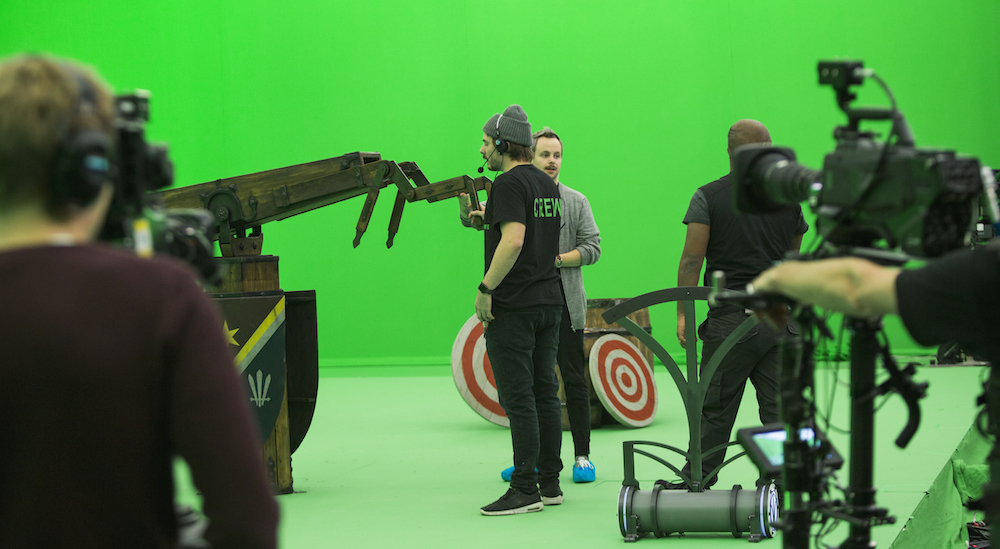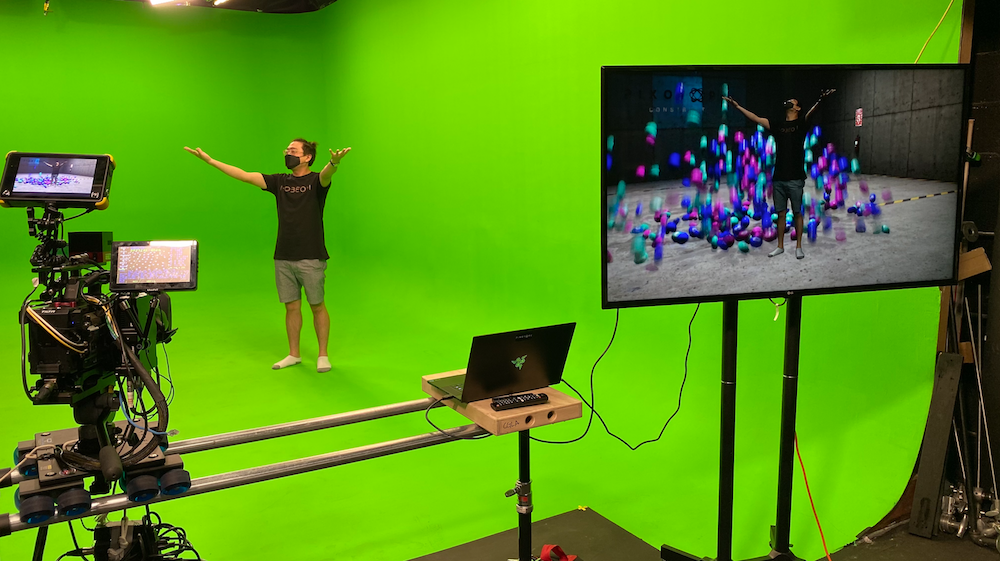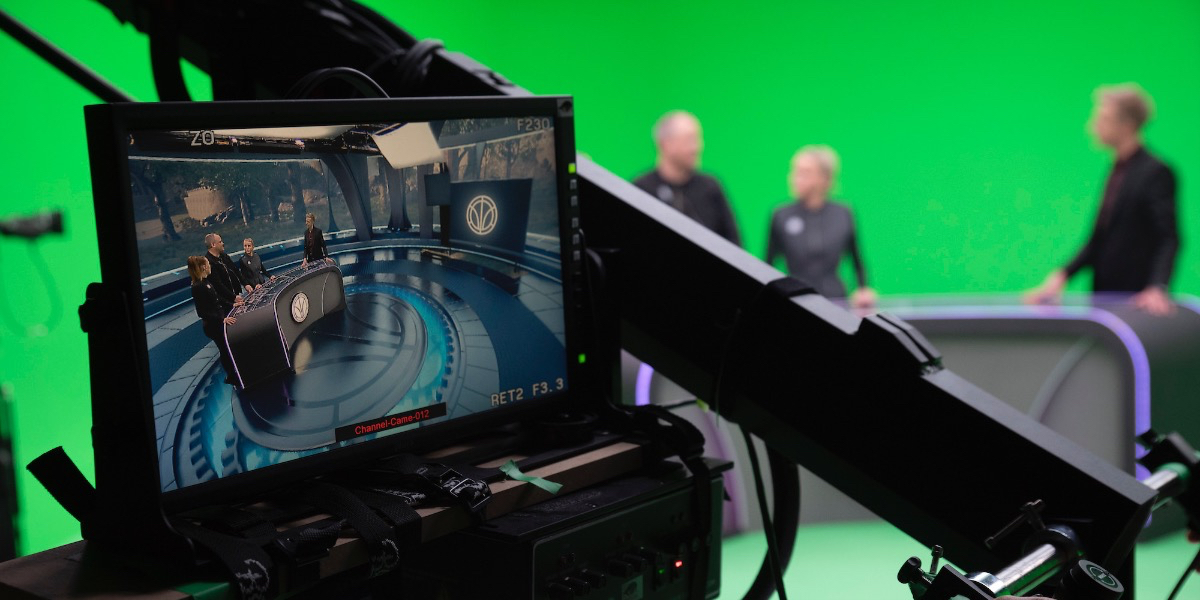
Mind the gap
Posted on Nov 3, 2022
Virtual production has transformed from an alternative to traditional production – and is now the accepted norm. But there’s a shortage of people who know what they’re doing
WORDS. Robert Shepherd | IMAGES. Various
The Covid-19 pandemic, for many, was the most lamentable period in living memory. Of course, not everybody has been infected, but you’d be hard pushed to find someone who wasn’t negatively affected.
In stark contrast, many businesses spanning different sectors went through a renaissance. Professional cleaning services, Perspex manufacturers, dog breeders and second-hand car dealerships saw demand practically outstrip supply.
We all know that Netflix subscriptions rocketed, but contrary to popular belief, TV and film production did well, too. Well, some of it did. Although the pandemic was a major hindrance to traditional crews around the world for the best part of two years, it was a boon to virtual production (VP) specialists.
Forbidden from having cast and crew in the same space at the same time courtesy of social distancing, filming schedules were suddenly all but useless. Production houses and studios found clever ways to complete the projects in which they were heavily invested.
Suddenly, VP was in vogue. Often described as a successor to green screen, VP creates a 3D area using intricate backgrounds made in pre-production. This allows directors, along with other visionaries and creatives, to – among other things – work on a mocap stage, as well as see a virtual environment complete with characters.
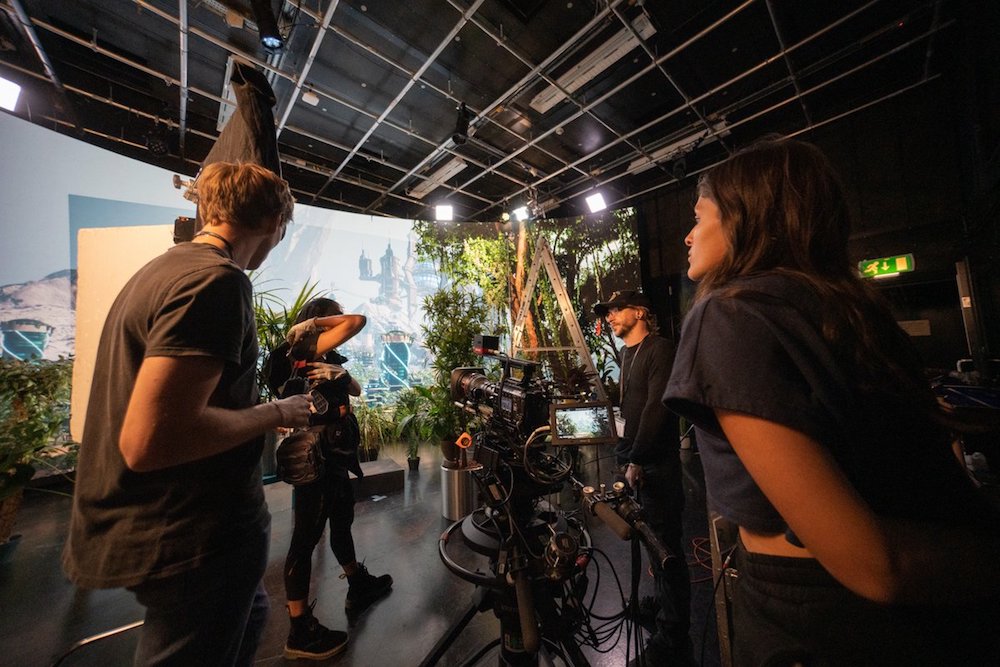
VP ticks several boxes, including cost efficiency, creativity and reduced environmental impact, so the new normal in film and TV production was looking like a change for the better. Companies like Brainstorm, Brompton Technology and Mo-Sys were suddenly more in demand than ever before.
That said, the technology that saved a raft of productions from drowning has been there for some time. Only now is it being appreciated.
“Most of the concepts underpinning VP aren’t new and have been pioneered at a blockbuster level over a number of years; from Star Wars to The Lord of the Rings, Avatar and The Mandalorian,” says Becky Gregory-Clarke, head of immersive at StoryFutures Academy, who leads the NFTS Certificate in Virtual Production. “Advances in real-time graphics, virtual and augmented reality technology, as well as a raft of new features added to freely available game engines, have all contributed to the recent uptake.”
What’s more, VP isn’t limited to big productions – it’s also ubiquitous in broadcasting and news studios. After all, broadcasters had to report on the pandemic that was keeping their own news crews away from studios.

CHASING PROGRESS
When something is ahead of its time or accelerates at a speed nobody was expecting, we all need time to catch up. VP certainly appears to be a victim of its own success. Although the tech-led transition toward it is undoubtedly the future, the industry can’t find the staff.
Last year, the aforementioned StoryFutures Academy published its interim VP Skills Report, providing a map of the VP know-how required in the UK film and TV sector. Let’s just say, it was sobering. Among other things, the report found the UK is facing a possible skills gap across multiple VP disciplines, when demand for the technology is growing.
Dark Matters is a full VP service facility offering all the assets of a traditional film studio. Based in Tigery, just south of Paris, it houses around 160,000 sq ft of indoor facilities and a fully-fledged VP offering – previs/techvis, LED volumes and other ICVFX solutions.
The late Margaux Durand-Rival, the company’s then head of creative, said hiring an in-house DOP could bring a lot of benefits to the company’s visualisation department. In came Quentin Jorquera, who found out about the job from Dark Matters CEO, Romain Cheminade.
Jorquera says that, while Covid-19 has ‘obviously increased demand’ for VP, there’s less aversion to it because the tech is finally ready. “We’ve been using clunky versions of all the current VP and ICVFX tools for years,” he explains. “But we have finally reached real-time rendering that appears believable in-camera – presenting high-poly CGI elements in AR with only two frames of delay, straight from the operator’s viewfinder.”
Carina Schoo, education program manager at Pixotope, concurs. “With countless top productions demonstrating the possibilities, we’ve seen a huge uptick in demand for VP,” she says. “But while the technology has matured and demand has grown, the talent pool needed to drive the industry forward has not.”
PUMP UP THE VOLUME
Brompton Technology has participated in initiatives by ScreenSkills to offer training on its LED processing, as part of larger courses on VP for film.
Rob Fowler, Brompton’s director of business development, says there are very few practitioners with hands-on experience at present. As more volumes are built, the pipeline of skilled practitioners needs to grow.
“The skills shortage in virtual production exists for several reasons. But chiefly, it’s the speed at which in-camera visual effects (ICVFX) with LED is growing,” Fowler adds. “Firstly, we are talking about some brand-new technologies – or if not entirely new, then new to filmmaking.”
He explains that, while a sophisticated, feature-dense product might be easy to use, ‘it’s possible to miss some of the interesting, helpful features on the system’ if practitioners can’t access training readily.
“The difference between something that looks good, but unrealistic, next to something genuinely convincing on-camera is very fine. Practitioners need all the tools at their disposal,” he continues. “We’ve put many hours into providing those tools, so making sure people know how to take advantage of them is in our interests, too.”
While Brompton has always tried to deliver as much direct training as possible, Fowler says the company is ‘keen to work with anyone addressing these gaps’.
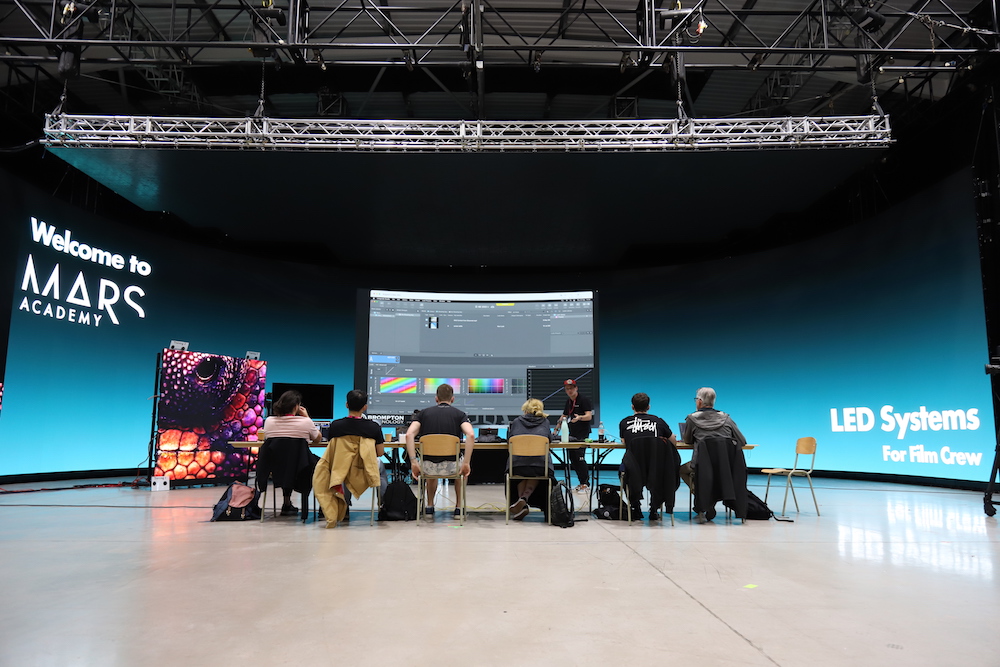
SOLVING THE PROBLEM
People with Jorquera’s skill set aren’t ubiquitous. He thinks it’s because VP requires a mix of rare competencies: knowledge of the VFX pipeline, but also its on-set uses and customs.
“That’s why, as a DOP, I felt it was my place to learn about VP,” he continues. “Right now, VP people coming from VFX want VFX-background technicians only. I’m not sure it’s the answer; the film industry needs those who can find solutions outside the box, understand our tools and ways of crafting our art.”
Jorquera adds that there’s a need for workers trained both to be on-set, with a knowledge of filming practices, as well as a ‘geek’ spirit – a passion for hardware and software, video game engines and coding. He sees it more as a fusion of two different industries: film and gaming.
As far as Christina Nowak, director of VP at Anna Valley, is concerned, the skills shortage exists for many reasons. “With VP shoots specifically, there’s a dearth of expertise. It’s still a world of emerging technology and techniques,” she says. “In order to be creative, you need the technical mindset to drive it. These roles are relatively new in virtual production, given its application is still only a few years old, and until there is sufficient talent, we will need to outsource from other industries like gaming and live events, to bridge that gap.”
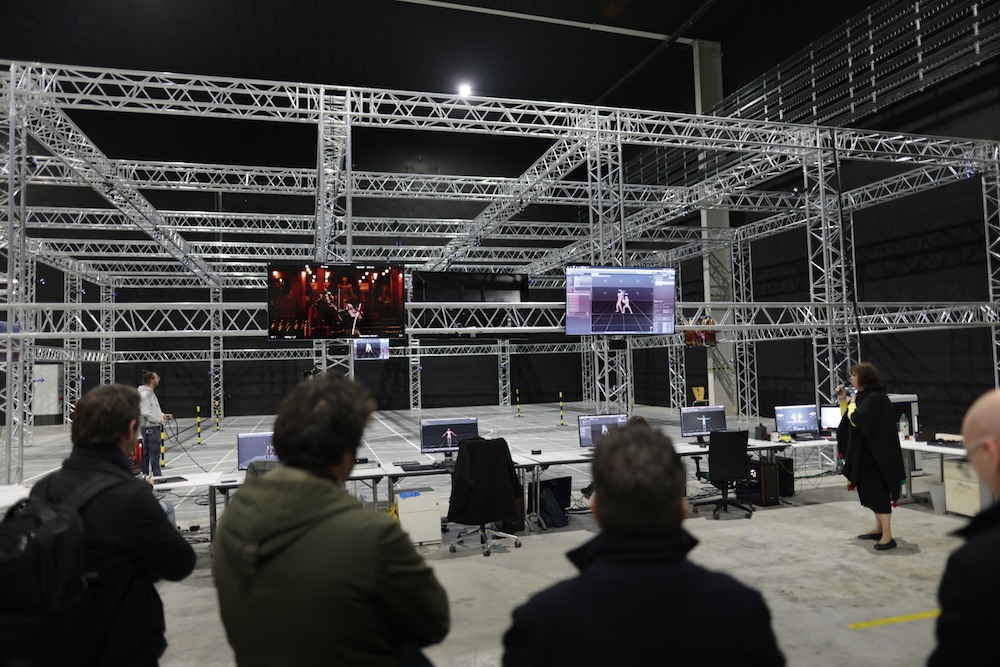
Thankfully, a number of companies are taking action – the NFTS has been pioneering VP training initiatives for the last two years. “As part of its collaboration with Royal Holloway, University of London on the StoryFutures Academy programme, we have delivered a range of freely available training opportunities aimed at upskilling the UK’s creative workforce in the deployment of virtual and real-time technology for storytelling,” confirms Gregory-Clarke. “These include facilitating on-set placements and training sessions in partnership with the team behind Fireworks, a short film directed by double Academy Award-winner Paul J. Franklin. And also a first-of-its-kind VP accelerator programme for UK companies – VP Futures – in partnership with Future Screens NI, supported by Epic Games and Industrial Light & Magic.”
As part of StoryFutures’ Virtual Production R&D Discovery Pilot, Anna Valley is running a project focused on solving VP workflows and compatibility between teams of technologists, digital artists, lens technicians and performers. The company is working with Royal Holloway academics and students over three months, to design, create, build, shoot and finish a piece of content at Anna Valley’s facility – with the latter acting as technical lead and technology provider. “We’re planning on expanding our graduate trainee scheme – launched in 2019 to give the next generation of project managers, engineers and technicians invaluable hands-on experience in live events – to include VP skill sets and opportunities,” says Nowak. “As patrons of the Guild of British Camera Technicians, we will be developing training materials – and we are in discussion with ScreenSkills to support its VP courses.”
Schoo describes how, in addition to accessing industry experts, Pixotope is joining forces with a diverse group of partners, covering vendors, creative agencies and local suppliers, to provide further access to tools and advice. “These partnerships give graduating students a path into the industry. The programme then provides those partners with a talent pool from which to recruit,” she says.
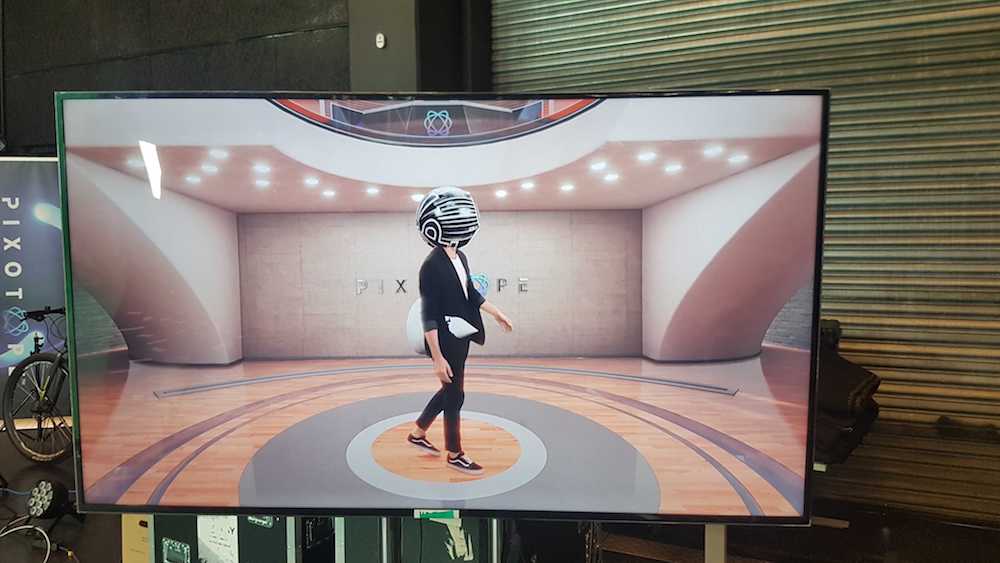
A DOSE OF REALITY
Over in leafy, affluent Beaconsfield, visual effects MA students at the National Film and Television School (NFTS) recently completed a new short film, where they adopted VP techniques for the first time.
Reality Heist is a five-minute original story of a scientist who finds, after some experimentation with a mix of technology, she can skip dimensions at the flick of a switch. Moreover, the short film blends traditionally post-rendered, photoreal CG with real-time, in-camera VFX.
Ian Murphy, head of VFX at the NFTS, describes how an environment created in Unreal Engine was shot on the school’s brand-new LED wall.
“This combines seamlessly with material from a traditional location shoot containing a set build and props, with CG assets added in post,” he clarifies. “It was important to the students and I that, with exciting advances in technology, the VFX team is now part of the creative decision-making process early on.”
According to this leading international film school, the VFX industry is changing quickly. It has moved on from needing graduates that sit all day in facilities (or at home), headphones on, deeply focused on pushing final pixels around. Now, they must understand the entire VFX process, and be resourceful, communicative and comfortable on a film set.
Murphy says this need is ‘naturally well catered for’ at the NFTS. “It’s in everything we do,” he confirms. “Viewers can discover how the team achieved this full, in-house, VFX-heavy production and what the VFX department at the NFTS is capable of – in terms of storytelling, as well as final pixel finish – through watching the short film’s VFX breakdowns.”
After weeks of building CG assets in Maya, compositing in Nuke and training in Unreal Engine, the completed project is described by Murphy as “a neat and revealing education in blending VFX that is traditionally rendered and composited with its real-time, in-camera ally – nicely finished with some subtle colour grading and a fantastic original soundtrack.”
The students behind the film will graduate in March 2023.
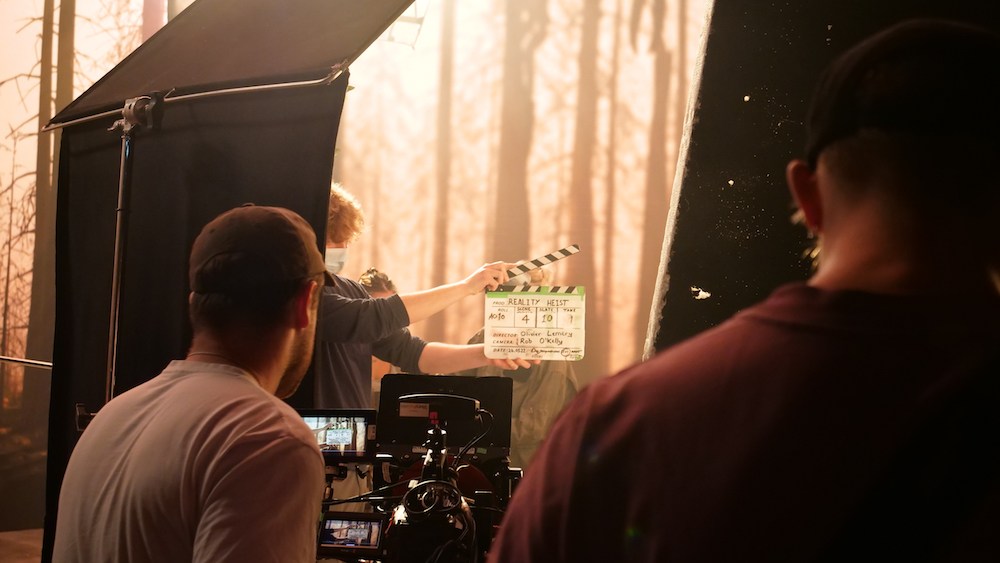
BRIDGING THE GAP
The good news is there’s light at the end of the skills gap tunnel. Gregory-Clarke points out how several participants from the first year of the Certificate in Virtual Production at the NFTS have gone on to industry roles actively incorporating VP. “This includes Hannah Winn, who secured a job as VP stage operator – soon afterwards VFX supervisor – at Yahoo Studios. And DOP Maria Guerberof, who uses Unreal Engine, previsualising with directors, producers and gaffers to form lighting plans on-set.”
What’s more, many believe that in the not-so-distant future, VP will be the main innovation driving the visual impact of high-end films. In fact, Schoo says it will no longer be seen as separate, but a subsegment of general media production. “Evolving audience expectations will fuel this future. Since audiences are so accustomed to VFX-heavy content, anything less than that will soon feel flat. The industry needs to keep up,” she affirms. “As the tech becomes more refined, it will continue to be democratised. YouTubers and Twitch creators will leverage it for their content, and this will drive even more innovative use cases and workflows.”
While it’s obvious the VP skills shortage needs to be tackled urgently, at least the training schemes – and jobs that follow – are out there.
CONTACTS
Anna Valley | annavalley.co.uk
Brompton Technology | bromptontech.com
Dark Matters | darkmatters.one
National Film and Television School | nfts.co.uk
Pixotope | pixotope.com
This article originally appeared in the November 2022 Issue of Definition. Read the full magazine here.


